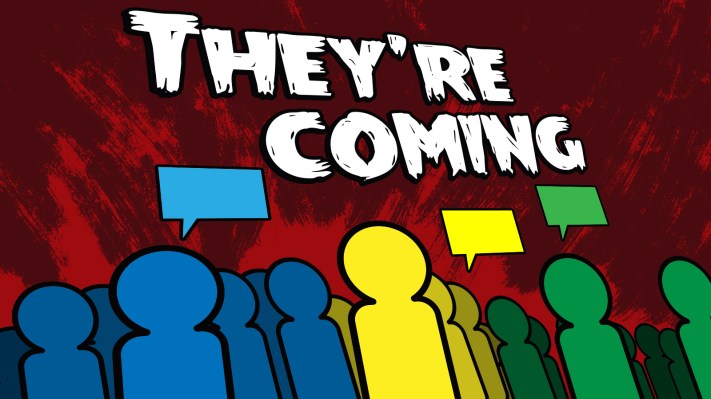Editor’s note: Jon Bischke is a founder of Entelo and is an advisor to several startups.
Back in the mid-2000s, many espoused a theory that there would emerge social networks for different types of people. It sounds a little preposterous now in the age of Facebook dominance, but at the time you had smart people like Marc Andreessen founding companies like Ning that followed this thesis. I was the co-founder of a now-defunct social network called Zaadz that you could think of as “Facebook/MySpace for the Whole Foods set.” We competed with the likes of Tribe, a company run by the pre-Zynga Mark Pincus, and were acquired in 2007.
Fast forward a decade and much of the personal social networking activity has consolidated on Facebook. Sure, there are fast-growing sites like Snapchat and Tumblr that deserve recognition and respect. But in terms of metrics they’re still quite small compared with the juggernaut that is Facebook (this gap only grows if you consider Instagram and WhatsApp to be part of Facebook).
But there’s an area where signs are emerging of “different networks for different types of people”: professional networking. We’ll start with the obvious. LinkedIn is the dominant professional social network. It has become the system of record for the online resume for many professionals. And the growth of LinkedIn as a blogging platform shouldn’t be underestimated.
That said, it’s interesting to note some recent fundings of companies that could reasonably be called “LinkedIn for X.” Forty percent of all U.S. doctors are now on Doximity, a company that recently announced a $50 million dollar funding round. Sermo and HealthTap play in this space, as well. None of these networks are exactly like LinkedIn, which is kind of the point. What doctors want and need (HIPAA compliance anyone?) is different from what other professionals want and why a site like Doximity might resonate with them more than LinkedIn.
Consider another area for professionals: People with previous military experience. RallyPoint is billed as “LinkedIn for the military” and recently raised a $5.3 million round. Once again, they aren’t the only game in town, as startups like Hirepurpose are entering the fray. While LinkedIn has made admirable strides toward assisting veterans in finding employment (witness LinkedIn for Veterans), the growth of these vertical networks speaks to a market need.
Finally, there’s a group of individuals where LinkedIn has struggled to find product-market fit over the years and it’s a big one: college kids. A notable vertical network here is Piazza, which recently raised an $8 million round from Khosla Ventures. Piazza now has nearly a million college students leveraging its Quora-style Q&A platform and has very compelling engagement metrics.
The notion of a social network for every type of employee might be far-fetched, though. It’s not as if coffee baristas have a compelling need to join a network of other coffee baristas. Vertical professional networks are likely to be the most attractive to highly skilled knowledge workers. Think software engineers (GitHub), mechanical engineers (GrabCad), data scientists (Kaggle) and academics (Academia.edu and ResearchGate).
These networks are far from “niche.” GitHub has well over 6 million registered users and Academia.edu boasts more than 10 million users. Large funding rounds both speak to the growth of these networks and should help to accelerate further growth. In addition to Doximity’s mega-round, Spiceworks, a community for IT professionals, raised $57 million last February and GitHub raised $100 million back in 2012 from Andreessen Horowitz.
Social professional networks serve as a place for people to “do” things that other networks might not cater to. For example, GitHub revolves around the capability to commit code and Academia.edu offers the capability to share research papers. Indeed, content creation and sharing are central use cases for these networks. While a “GitHub for marketers” may not exist yet, websites like Inbound.org and YouMoz may be the places where something like this may gestate.
But perhaps this trend won’t really take off until there’s a network for journalists so the people writing stories can see this trend first hand. What? That site is called MuckRack? Never mind…
